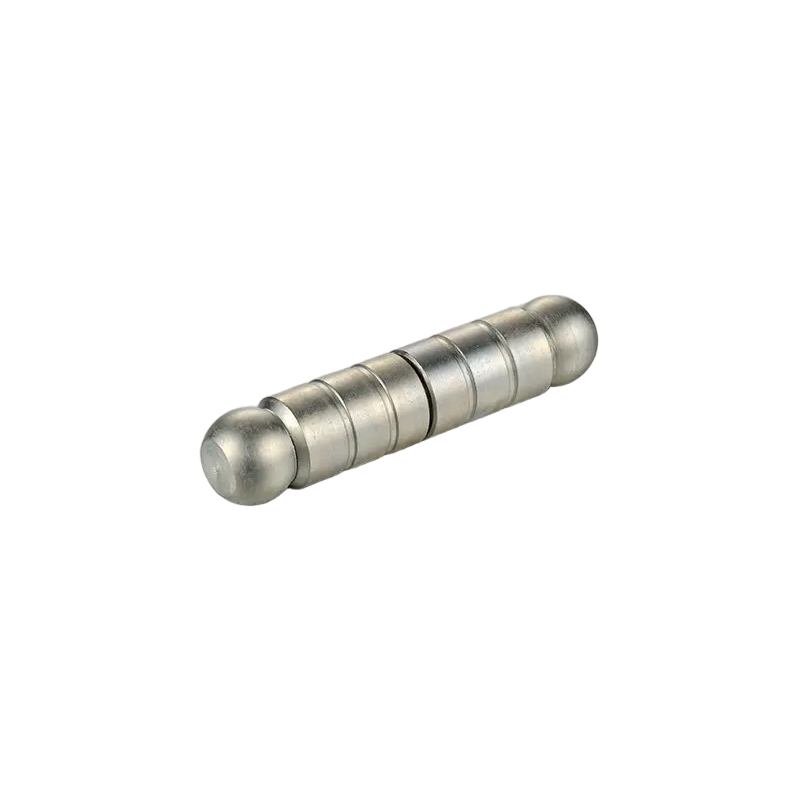No. 200 Gaoxin RD, Shanghua St, Lanxi, Zhejiang, P. R China
The CNC (Computer Numerical Control) machine tools are widely used in ...
See DetailsInterior door ball bearing hinges are precision-engineered components designed to ensure smooth and quiet door operation. The production process involves a sequence of steps focused on material quality, mechanical reliability, and long-term performance. Manufacturers follow a detailed and standardized procedure to produce hinges that meet both functional and aesthetic requirements for residential and commercial interiors.

The process typically begins with the selection of raw materials, commonly stainless steel or cold-rolled steel, chosen for their strength, corrosion resistance, and ease of machining. Sheets of metal are cut into hinge blanks, which are then shaped into leaf plates through stamping or laser cutting. This initial forming process ensures dimensional accuracy, which is critical for hinge alignment and function.
After shaping the leaf plates, the knuckles—the cylindrical sections where the hinge rotates—are formed along the edges. These are rolled and aligned to form a continuous barrel. Ball bearings, made from hardened steel, are inserted between the knuckles. These bearings reduce friction during door movement and enhance durability by distributing load evenly across the hinge.
Next, a hinge pin is inserted through the knuckle and bearings, holding the two hinge leaves together. Some models are designed with non-removable pins for enhanced security. The assembled hinges undergo surface treatments, such as electroplating or powder coating, to improve resistance to corrosion and wear.
5 inch ball bearing door hinges are often selected for medium to heavy doors in residential and commercial buildings due to their combination of strength, size, and performance characteristics. While they may appear more costly at glance compared to standard plain bearing hinges, their long-term cost-effectiveness becomes apparent when evaluating durability, performance, and maintenance requirements.
One of the primary advantages contributing to cost-efficiency is their extended lifespan. Ball bearings reduce friction between moving parts, which means less wear over time. This reduction in wear translates to fewer replacements and repairs, especially in high-traffic environments such as schools, offices, and hospitals. Fewer maintenance interventions reduce labor costs and minimize operational disruptions.
Another factor in their cost-effectiveness is the performance stability over time. Because the movement remains smooth even after prolonged use, doors maintain their alignment and require fewer adjustments. This can be especially important in installations where proper door closure is necessary for energy efficiency, security, or privacy.
Ball bearing exterior door hinges are specially designed to withstand heavier loads and more demanding environmental conditions than their interior counterparts. These hinges are commonly used on entry doors, service doors, and other access points where durability, strength, and weather resistance are essential.
One of the key benefits of ball bearing hinges for exterior use is their ability to maintain performance under frequent operation. Entry doors are opened and closed more often than interior doors, and the smooth rotation provided by the ball bearings reduces strain on the hinge components. This not only extends the lifespan of the hinge but also preserves door alignment, ensuring consistent security and energy efficiency.
Another consideration in exterior use is environmental exposure. These hinges are typically constructed from materials like stainless steel or are treated with protective coatings such as zinc plating or powder coating. This enhances their resistance to moisture, temperature fluctuations, and corrosion—common challenges in outdoor or semi-outdoor installations.
Ball bearing exterior hinges also contribute to safety. Because exterior doors often need to meet fire-rating or security standards, the robust construction of ball bearing hinges supports compliance with these requirements. Some models are designed with non-removable pins to prevent tampering, an important feature in exterior applications.